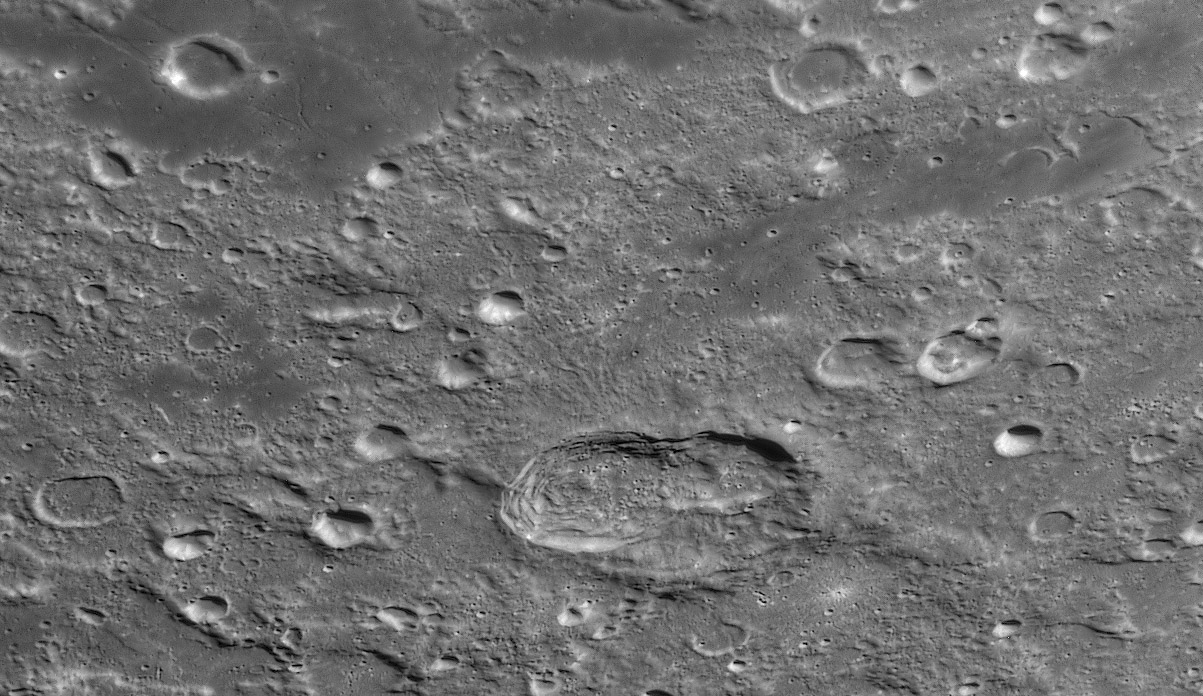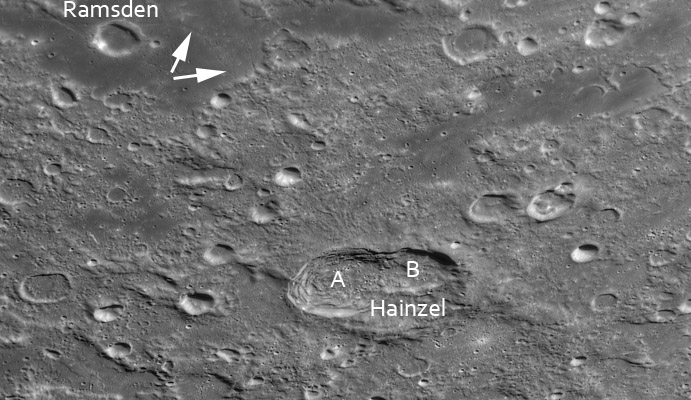May 16, 2013
Lonesome Chain

approximate north up image by " rel="nofollow Mike Wirths, Baja California, Mexico
 |
Hainzel A and B were probably formed by the simultaneous impact of a split comet or asteroid. Hainzel may have been a pre-existing older crater or perhaps was formed slightly earlier as part of the A/B collisions. What is remarkable is the very asymmetric distribution of ejecta. There is very little in any direction except to the north towards Ramsden. A broad swath of radial ridges and gullies extend from A about 30 km. Beyond that a single squiggly chain of secondaries goes 150 km from the crater rim to the edge of the mare. The chain extends another 35-40 km across the mare with a surrounding pin-pricks of brightness. The LRO QuickMap " rel="nofollow shows this extension across the mare to be a classic herringbone secondary chain with slightly overlapping craters wrapped in ejecta, making a v-pattern. This entire 190 km long chain is radial to the intersection of A and B, rather than the center of A. This seems to be strong evidence that A and B did form simultaneously. I can't see evidence of the herringbone pattern anywhere along the chain except where it cuts the mare. Perhaps the highland terrain is too rough for it to form.
|



